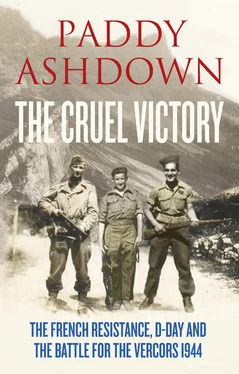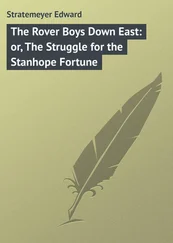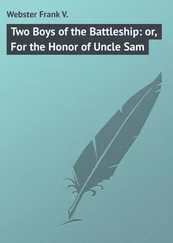1 ...8 9 10 12 13 14 ...35 That mid-December night in 1942, Dalloz made the first three-page draft of his plan. ‘The project had ripened in me over the time [since he had first discussed it with Jean Prévost] and my thoughts flew easily off my pen on to the paper. After I had finished, I opened the door and breathed in the cool night air. The highest branches of the almond tree in the garden swayed in the wind, as though trying to sweep the stars from the sky, and the clamour of the local stream filled the silent darkness. The Vercors was there, very close – almost alongside me. I thought for a long moment. Secrecy suddenly seemed my co-conspirator; the moment was heavy with responsibility, resolution and hope.’
The bitter winter of 1942/3, which destroyed Hitler’s armies before the gates of Stalingrad, also held the Vercors in an icy siege. The cold that Christmas cut like a knife. The plateau lay under a deep layer of snow which weighed down branches in silent pine forests, piled up thick white quilts on timbered roofs and gave an extra tinge of blue to the woodsmoke rising from farmhouse chimneys.
It was a bad time to be away from home. Yet this was the choice that many young men in France faced that December: to leave home for the forests or join the work transports to Germany. By December 1942, the number of fleeing réfractaires was causing severe administrative problems for Resistance movements such as the Martin/Samuel organization in Grenoble and Villard-de-Lans. In early December, a group of young railwaymen from Grenoble station approached one of Eugène Chavant’s friends, Jean Veyrat, who had by now joined the Café de la Rotonde plotters in Grenoble. The young men told Veyrat that they wished to go underground to avoid having to leave for Germany. But where could they go?
In the second week of December, Eugène Samuel went to the little town of Pont-en-Royans, whose ancient houses cling impossibly to the vertical sides of the Gorges de la Bourne, guarding the narrow bridge which spans the river and the western entry to the plateau. Here he knocked on the door of one of his brothers-in-law, the café owner and town Mayor Louis Brun, and asked if he could help. Brun said he knew just the place.
On 17 December 1942, Brun, accompanied by Simon, Samuel’s younger brother, struggled through deep snow to look at an isolated farmhouse with substantial outbuildings called La Ferme d’Ambel, which lay in a desolate and deserted valley in the south-western corner of the plateau. It was ideal. The farm, fed by a bountiful and permanently running spring, is tucked under a high ridge covered in woods, which sweep down almost to its back door. The main access for vehicles is by a rough track served by stone bridges, leading down through beechwoods which shield the area from the nearby mountain road. The house, together with the loft space above and its outbuildings, was capable of accommodating, the two men estimated, around fifty or so réfractaires .
To add to its advantages the Ferme d’Ambel lay at the heart of a large timber concession centred on the nearby Ambel forest, which provided good cover for human activity in the area – indeed the réfractaires could be employed as a useful local labour force. These timber concessions played an important part in the life (and especially black-market life) of wartime France. Timber produced charcoal and charcoal produced the gas which, in the absence of readily available petrol, was the main driving power of the gazogène lorries and cars which could be seen everywhere puffing and wheezing around the streets of Grenoble and struggling their way in a cloud of smoke up the steep roads of the plateau. It was for this reason that timber concessions were often closely linked with the haulage industry – and so it was with the concession at the Ambel forest, two of whose most active partners were members of the transport firm run by the three Huillier brothers who had helped to found the Villard-de-Lans group of early resisters.
On 6 January 1943, a dozen or so young men, made up chiefly of railway workers and Polish refugees from Villard, moved into the Ambel farm. That month, as the pressure of conscription grew, a clandestine system was established to deal with the increasing flood of young men seeking refuge from the transports to Germany. Would-be réfractaires would be asked to go to a hardware shop, run by two sympathizers just a couple of hundred metres from the Place Verdun in Grenoble. The shop was served by two entrances, one on the main street and a second leading on to a small street at the rear. Here, in a back room, they were interviewed by Eugène Chavant and, if found acceptable, were instructed to go home, pack a few necessaries in a rucksack and catch the little funicular railway run by the Huillier brothers to Villard-de-Lans. There they would transfer to a Huillier bus to Pont-en-Royans where they would go to Louis Brun’s restaurant. From here they were guided across the mountains at night to Ambel. On arrival, they would be met by the site director of the Ambel forestry concession, Louis Bourdeaux, who had been appointed by the Villard group as the Ambel’s camp commander.
Measures were also put in train to make Ambel as secure as possible. The lights in the Ferme d’Ambel, which depended on a single electric cable supplied from the hydroelectric plant at Pont-en-Royans, were left on all day and night. This enabled a Resistance sympathizer at the plant to warn of approaching danger by turning the supply (and therefore Ambel lights) on and off three times in quick succession. Ambel was now a properly structured Maquis camp. Some claim that it was the first to be established in all France.
Meanwhile, at Côtes-de-Sassenage, Pierre Dalloz was thinking of ways to pursue his own ideas about the use of the Vercors to fight back against France’s occupiers. Encouraged by Jean Lefort’s welcome for his plan (but still completely unaware of the existence of his co-conspirators in Grenoble and Villard-de-Lans), he decided to take matters further. He was advised by a left-wing friend at Grenoble University that the man to see was Yves Farge, the foreign affairs editor of the regional newspaper Progrès de Lyon , who was known to have high-level Resistance connections.
In late January 1943, Dalloz, with his plan carefully tucked into an inside pocket of his jacket, took the train to Lyon, calling a little after midday at the offices of Progrès where he asked for the foreign affairs editor. The two men went to a nearby restaurant, where over lunch Dalloz explained his idea. He left a copy of his paper with Farge, who expressed enthusiasm for the plan and promised to ensure that it would be seen by the ‘appropriate people’. Farge must have briefed Jean Moulin very shortly after the lunch, for on 29 January Moulin sent a courier to de Gaulle in London with full details of the Dalloz plan and a personal recommendation that it should be supported.
On 31 January, Farge paid Dalloz a return visit in Grenoble to tell him that Moulin had seen the plan, approved it and agreed that 25,000 francs should now be assigned to Dalloz to develop the idea. Dalloz hurriedly typed a second, more comprehensive paper on his ideas. A few days later, he received a note which instructed him to join Farge and to ‘Be in the waiting room at Perrache station in Lyon at 12h15 on 10 February where “Alain” will meet you.’ The two men found their contact ‘Alain’ in deep contemplation of the window display of the station bookshop. ‘The meeting place has been changed,’ he instructed. ‘Someone will be waiting for you at Bourg-en-Bresse station. There is a train at 16h20. When you arrive, stand in front of the station entrance and carry a copy of the newspaper Signal in a prominent place. General “Vidal” will approach you. He will be dressed in a grey overcoat with a white silk handkerchief displayed in the top pocket.’
Читать дальше












